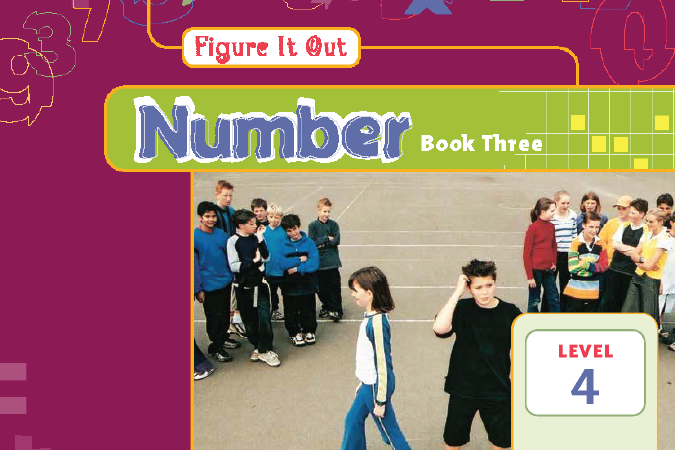Frantic fund-raising
This is a level 4 number link activity from the Figure It Out series. It is focused on using mental strategies to solve multiplication and division problems and to find the mean. A PDF of the student activity is included.

About this resource
Figure It Out is a series of 80 books published between 1999 and 2009 to support teaching and learning in New Zealand classrooms.
This resource provides the teachers' notes and answers for one activity from the Figure It Out series. A printable PDF of the student activity can be downloaded from the materials that come with this resource.
Specific learning outcomes:
- Use mental strategies to solve multiplication and division problems.
- Find the mean.
Frantic fund-raising
Achievement objectives
NA4-1: Use a range of multiplicative strategies when operating on whole numbers.
Required materials
- Figure It Out, Link, Number, Book Three, "Frantic fund-raising", page 7
See Materials that come with this resource to download:
- Frantic fund raising activity (.pdf)
Activity
In this activity, the students need to keep track of the funds raised for the netball trip.
Question 1 is a fairly simple division problem: 300 ÷ 200 or 3 ÷ 2.
Question 2 requires the students to use their knowledge of multiplication. They need to consider the issue of multiplying by cents or dollars.
Drawing a table like the one below is a good way of helping the students to see why 5 cents is $0.05, not $0.5. They should already know that 100 cents equals $1, so this is a good starting point.
Cents |
Dollars |
|---|---|
100 50 40 20 10 5 |
1 0.5 0.4 0.2 0.1 0.05 |
The last part of this question and question 4 require an understanding of what an average is. Helping the students to see the links between sharing equally, division, and average is important.
You could extend question 4 by asking “How much could each girl have earned for each of the 4 weeks to reach the total of $1,286? Give five different possible correct answers.”
“What if …
- they earned twice as much in the second week as the first week?
- they didn’t earn any money in the second week?
- each week, they each made more money than they had the week before?”
Question 5 helps the students to understand the concept of grouping and its connections to multiplication. Avoid telling them short cuts or rules such as “just add a zero to the end when multiplying by 10”. Students who understand the concept and are encouraged to look for short cuts will find the zero rule themselves. Students who learn short cuts but have no understanding soon become stuck and unable to continue. One of your key roles is to develop understanding.
Discussion questions for question 6 could be:
- Is it better to work out the totals for the whole group and then divide by the 10 girls or to divide each week’s profit into each girl’s share and then work out the totals?
You could extend this activity by asking:
- What was the most profitable fund-raising activity?
- Which activity do you think was the most practical (or the most enjoyable) fund-raising activity?
1.
a. $276.50
b. $27.65
2.
$1.50
3.
a. 375
b. $187.50
c. $18.75
4.
$128.60
5.
a. 2 000
b. $300
6.
a. $691.50
b. $69.15
The quality of the images on this page may vary depending on the device you are using.


